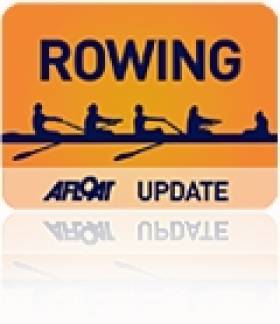| |
|
| 56th ERNE HEAD OF THE RIVER |
|---|
| |
| |
| Saturday 2nd March 2013 |
| |
| |
| Timed |
| |
| |
| Finishing Crew Mins:Secs |
| |
| |
| Position No. Crew Identity Class Rowing Time |
| |
| |
| 1 1 GM/NUIG/St.JoesMS 8 19:30 |
| |
| |
| 2 3 U.C.D. BC MS 8 19:33 |
| |
| |
| 3 2 QUBBC MS 8 19:49 |
| |
| |
| 4 4 DUBC MS 8 19:52 |
| |
| |
| 5 8 DUBC MI 8 20:08 |
| |
| |
| 5 = 9 U.C.D. BC A MI 8 20:08 |
| |
| |
| 7 6 NUIG BC MI 8 20:09 |
| |
| |
| 8 5 St Michaels RC MS 8 20:30 |
| |
| |
| 9 13 Neptune RC MJ18 8 20:55 |
| |
| |
| 10 12 UCD BC B MI 8 21:03 |
| |
| |
| 11 20 U.C.D. BC A MN 8 21:10 |
| |
| |
| 12 25 DUBC B MN 8 21:11 |
| |
| |
| 12 = 14 Portora BC MJ18 8 21:11 |
| |
| |
| 14 19 QUBBC A MN 8 21:23 |
| |
| |
| 15 21 NUIG BC MN 8 21:37 |
| |
| |
| 16 10 St Michaels RC MI 8 21:46 |
| |
| |
| 17 15 MCB BC MJ18 8 22:09 |
| |
| |
| 18 30 Garda BC MI 4x 22:11 |
| |
| |
| 19 18 DUBC A MN 8 22:17 |
| |
| |
| 19 = 22 Portora/BBC/CAIBC MS 4x 22:17 |
| |
| |
| 21 33 Bann RC MJ16 8 22:18 |
| |
| |
| 22 24 U.C.D.L B.C A WS 8 22:24 |
| |
| |
| 23 16 RBAI BC MJ18 8 22:26 |
| |
| |
| 24 11 CAIBC MI 8 22:35 |
| |
| |
| 25 27 QUBBC B MN 8 22:36 |
| |
| |
| 26 35 MCB BC MJ16 8 22:47 |
| |
| |
| 27 40 Portora BC MI 4+ 22:57 |
| |
| |
| 28 23 LSC MS 4x 23:06 |
| |
| |
| 29 28 DUBC C MN 8 23:08 |
| |
| |
| 30 17 Blackrock BC MJ18 8 23:19 |
| |
| |
| 31 41 BBC MM 8 E 23:22 |
| |
| |
| 32 32 Portora BC MJ16 8 23:36 |
| |
| |
| 33 42 BRC A MM 8 C 23:38 |
| |
| |
| 34 43 BRC/BBC B MM 8 E 23:39 |
| |
| |
| 35 29 U.C.D. BC MI 4x 23:41 |
| |
| |
| 36 47 Bann RC WI 8 23:44 |
| |
| |
| 37 45 QULBC WI 8 23:51 |
| |
| |
| 38 31 U.C.D.L.B.C B WS 8 23:58 |
| |
| |
| 39 34 CAIBC MJ16 8 24:08 |
| |
| |
| 40 63 CAIBC MJ18 4+ 24:09 |
| |
| |
| 41 38 BBC MS 4+ 24:10 |
| |
| |
| 42 48 Portora BC WJ18 8 24:13 |
| |
| |
| 43 50 Bann RC MM 8 C 24:31 |
| |
| |
| 44 49 LVBC MM 8 E 24:42 |
| |
| |
| 45 44 OCBC/TCBC MM 8 F 24:47 |
| |
| |
| 46 60 St Michaels BC WS 4+ 24:52 |
| |
| |
| 47 53 QULBC A WN 8 25:11 |
| |
| |
| 48 57 BBC WM 8 D 25:13 |
| |
| |
| 49 59 Portora BC WS 4x 25:19 |
| |
| |
| 50 62 Bann RC MJ18 4+ 25:42 |
| |
| |
| 51 52 Molesey B C MM 8 G 25:56 |
| |
| |
| 52 37 MCB BC B MJ16 8 26:14 |
| |
| |
| 53 54 BRC WN 8 26:33 |
| |
| |
| 54 55 QULBC B WN 8 26:48 |
| |
| |
| 55 58 Neptune BC WS 4x 27:04 |
| |
| |
| 56 51 Portadown BC MM 8 D 27:09 |
| |
| |
| 57 66 Portora BC A WJ16 8 27:16 |
| |
| |
| 58 36 Portora BC B MJ16 8 27:22 |
| |
| |
| 59 61 BRC WS 4+ 27:29 |
| |
| |
| 60 65 CAIBC MJ16 4x 27:53 |
| |
| |
| 61 67 Portora BC B WJ16 8 28:52 |
| |
| |
| 62 56 QULBC C WN8 29:55 |
| |
| |
| 63 = 7 QUBBC MI 8 Did Not Row |
| |
| |
| 63 = 26 U.C.D BC B MN 8 Did Not Row |
| |
| |
| 63 = 39 DUBC MI 4+ Did Not Row |
| |
| |
| 63 = 46 NUIG BC WI 8 Did Not Row |
| |
| |
| 63 = 64 Blackrock BC MJ18 4x Did Not Row |
| |
| |
| The positions given are those relative to all crews participating. |
| |
| |
| Positions within a Class are to be determined by inspection. |
| |
























































